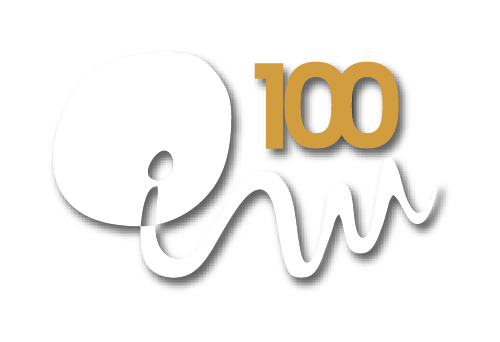The day of insemination
What is done on the day of insemination?
The man obtains a semen sample at home and delivers it to Institut Marqués in a period of less than 1 hour. In the Semen Laboratory it is prepared using a gradient technique that separates the seminal plasma and strengthens and concentrates the motile spermatozoa. Two hours later, the insemination is performed in the consulting room. The patient is placed in the gynaecological position and a fine cannula is inserted through the cervix to deposit the sperm at the bottom of the uterus. After a few minutes the sperm will have reached the fallopian tubes where the oocyte is waiting for them.
It is not uncomfortable, lasts a few minutes and does not require any rest afterwards.
How many inseminations are performed in each cycle?
With the treatment regimen that we use in our centre, it is only necessary to perform one insemination per cycle, and the insemination must be synchronised with ovulation (it must be done after a few hours). If 24 hours have already passed since ovulation or the semen arrives 24 hours before ovulation, it is unlikely that the objective will be achieved.
Can intrauterine insemination be performed without preparing the sperm in the laboratory?
No. It is necessary to prepare the sperm before insemination to eliminate substances called ‘prostaglandins’ which, if not removed, can cause painful uterine contractions, as well as impeding the success of the technique.
How is donor sperm prepared?
In a donation, the sperm is always subjected to freezing as the donor’s blood tests must be repeated 6 months after the sample is obtained. In this way, any infectious disease is ruled out. In our centre all inseminations are intrauterine and are carried out by boosting the sperm in the laboratory. Despite being of very good quality, during the freezing and thawing processes the sperm can lose mobility, which is why the results are much better if the sperm is boosted after thawing.
How is an intrauterine insemination cycle performed?
The process consists of three phases:
- Ovarian stimulation phase
- Intrauterine insemination itself
- Luteal phase support
What is ovarian stimulation?
It consists of inducing multiple ovulation by means of hormonal medication. During the spontaneous menstrual cycle, many follicles begin to develop in each ovary, but when one of them reaches a slightly larger size, the growth of the others is inhibited. The treatment aims to make 1 to 4 follicles develop to full maturity, depending on the patient’s age and the number of cycles she is in.
What is a follicle?
A follicle is the place in the ovary where the oocyte, i.e. the female reproductive cell, develops. During the first phase of a woman’s menstrual cycle, the follicle develops: it starts out microscopic in size and grows to about 22 mm, filling with fluid containing nutrients for the oocyte. At this point a hole opens in the wall of the follicle and the oocyte comes out. This is ovulation.
How long does the ovarian stimulation phase last?
Usually about 9-14 days. During these days the patient should receive a daily subcutaneous injection and a nasal spray.
What is the most appropriate medication regimen for each patient?
The schedule is established based mainly on the patient’s age, ovarian morphology, hormone analysis, body mass, response to stimulation in previous cycles, if any, and our experience.
We believe it is very important to indicate the most appropriate medication and doses for each woman, individualising each case and avoiding standard treatment guidelines. Each patient has unique characteristics.
Our Centre is a pioneer in the use of combined medication (nasal GnRH analogues and subcutaneous gonadotrophins) which achieves better results.
What risks do medications have?
There have been many studies regarding possible illnesses and cancer risks from taking these drugs, however, there is currently no scientific evidence that these drugs cause subsequent pathology.
If an excessive response is produced, it can lead to ovarian hyperstimulation syndrome, but with the doses indicated for insemination and the controls that are carried out, this is exceptional.
Can insemination be performed without ovarian stimulation?
Yes, but the chances of pregnancy are lower. For this reason in our centre we only do it in special cases.
What do the stimulation controls consist of?
A vaginal ultrasound to observe the number of developing ovarian follicles and their size.
Based on these tests, the dose of medication is adjusted and the next check-up is indicated 1 or 2 days later. When the follicles have reached a size of 18 – 20 mm in diameter, the injection of HCG is indicated. This hormone induces the last changes of maturity and ovulation.
It is important that the treatment affects the patient’s life as little as possible; for this reason, we make it as easy as possible for the patient to attend the consultation at the time she prefers, between 9 am and 8 pm.
No control analyses are necessary; they are only requested in very specific situations.
The days following insemination
Is there any treatment necessary after insemination?
Treatment with an egg (vaginal suppository) of progesterone every 12 hours for 11 days is indicated. The aim is to optimally prepare the endometrium to receive the embryo. The 14 days following ovulation are called the luteal phase.
What type of life is recommended from insemination to pregnancy testing?
You can lead a completely normal life. Once the insemination has been performed, you do not have to do any more check-ups, you just have to wait. Often, as the day of the pregnancy test approaches, the patient feels more and more nervous; it is advisable to be psychologically prepared for these days of great anxiety and to have a particularly intense bonding with your partner.



